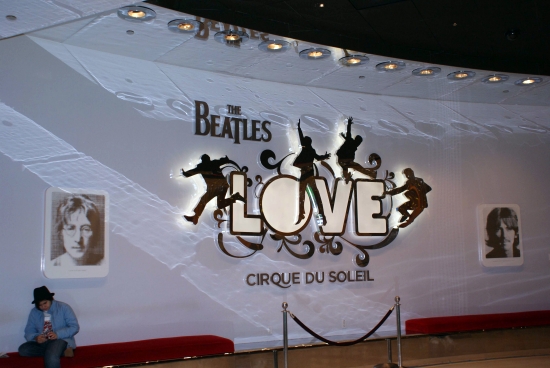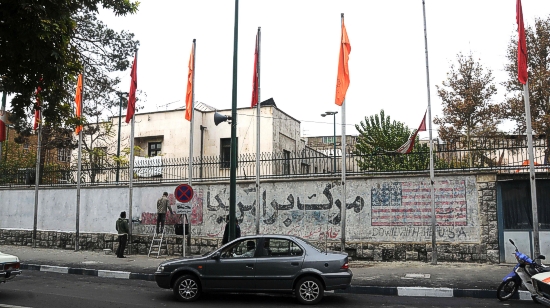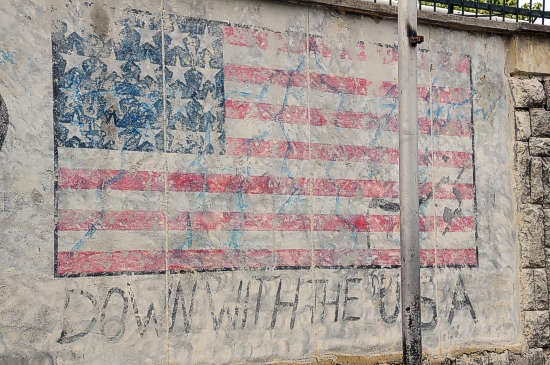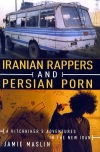N the first day of Rosh Hashana, the Jewish New Year in September, four smartly uniformed police officers escorted some 50 Jews from the Judischen Gemeindehaus (Jewish Community Center) of Berlin. They marched six blocks down Fananen Strasse toward an urban stream. I watched in awe as they cast Jewish sins into German water. I was unnerved by the thought that similar groups of Jews once were marched through the streets to have their bodies, sins and all, cast into the crematorium.

Kurt Weill Center, a Bauhaus treasure in
Dessau |
Under the guarded gaze of the German polizei, Rabbi Yehuda Teichtal, head of the Berlin Chabad Center, led his flock – some with tzitzit fluttering in the air – dancing in the streets to the words of Am Yisroel Chai [the Jewish people lives].
I did not realize how much normative Jewish life had returned to the home of the Reichstag until I embarked on a two-week tour of eastern Germany. Berlin is the site of a burgeoning revival of a recently extinct Jewish community.
"If you want to live a full Jewish life, you could," said Rabbi Chaim Rozwaski, formerly of Suburban Park Jewish Center in East Meadow, Long Island, and now rabbi of Synagoge Pestalozzi Strasse in the heart of Berlin.

Police guard Jewish Community Center of
Berlin |
"We have a cultural life and adult education. I came here six years ago to open a day school for the Lauder Foundation. And Touro College, which I helped bring here, is starting its first year this semester."
The Jewish population is organized as the Jewish Community of Berlin, with 12,000 registered members out of an estimated 25,000 living here.
Albert Meyer, a prominent real estate lawyer and president of the Jewish Community, said the federal government contributes 25 million Euros toward his budget of 27 million. The rest comes from the Jewish members who are each taxed 8 percent of income. As many are poor and unable to pay their dues, there is always a deficit.
"The Jewish population is divided," Meyer said. "There are the old members and there are the recent immigrants from Russia. The newcomers separate themselves. They act like they’re still in Russia. They speak Russian, read Russian language newspapers and refuse to integrate."

Rochus Graf zu Lynar and
his grandparents |
As for anti-Semitism, Meyer maintains there is no problem with the Germans. There may be individual attacks by skinheads and neo-Nazis, but nothing organized.
"The Germans are not anti-Semitic," Meyer said. "Anti-Semitism is imported. It’s a reflection of the Middle East conflict. Physical attacks on the street are committed by Arabs."
The synagogues I visited were well protected with police officers outside and metal detectors and Israeli security guards at the entrance.
While Jewish vitality is evident in Berlin, there is not much Jewish activity apparent in other parts of the former East Germany.
On a boat ride exploring the Spreewald – that lush blooming forest preserve in Saxony – we spotted one of the few synagogues that were not torched on Kristallnacht. Our gondolier told us what happened.

Congregation of empty chairs
stands as memorial to the
Great Synagogue of Leipzig
destroyed in Kristallnacht 1938 |
The white round structure originally served the 400 Jews of Dessau (today only 50 Jews are here). When a Nazi mob arrived on that fateful night of Nov. 9, 1938, the faithful non-Jewish caretaker locked them inside the synagogue and said, "Do what you want, but we’re staying inside together." The Nazis sat down, drank beer and then left.
In the Spreewald town of Lubbenau I met Count Rochus Graf zu Lynar. He returned from Portugal, after the 1990 demise of Communist control of East Germany, to regain the family castle that had been confiscated first by the Nazis and then the Communists.
The family had fled after his grandfather, Wilhelm Friedrich, was implicated in the failed Hitler assassination plot of 1944 – and hanged.
Rochus is transforming the well-manicured grounds and magnificent palaces into a tourist hotel, restaurant and facilities for business conferences.
In Dessau, birthplace of the Bauhaus movement of design and architecture, a Kurt Weill Festival is being planned for Feb. 25-Mar. 3 to honor one of the town’s greatest Jewish celebrities.
Weill, composer of Three-Penny Opera in 1928 (with playwright Bertolt Brecht), fled the Nazi terror five years later. He made his home in New City, N.Y., until he died in 1950.
In 1993, three years after reunification, Dessau reclaimed its former scorned countryman by establishing the Kurt Weill Center, which is becoming a popular tourist magnet.
Dresden, a city that was firebombed almost out of existence by British and American planes, has reinvented itself miraculously. Modern structures have supplanted the destroyed buildings, and historical landmarks have been reconstructed in their original style.
Of the 11,000 Jews in 1933, today there are only 500 – mostly immigrant Russians. There is a memorial at the site of the Great Synagogue, destroyed in the 1938 Reichspogromnacht.
Interestingly, Dresden’s world famous 14th century Frauenkirche, or Church of Our Lady, was restored in June with a contribution from a British Jew. Anisch Papur, originally from India now living in London, designed the elaborate church altar. The official opening and consecration will take place on Oct. 13, 2005.